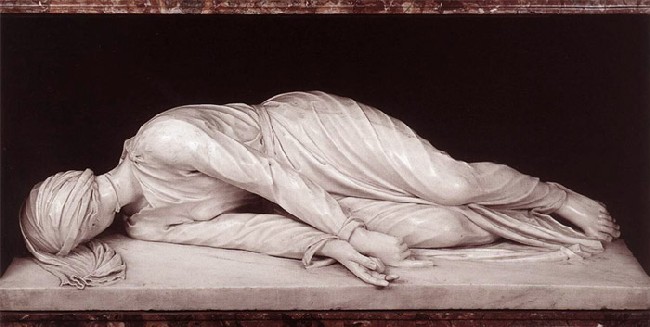
November is the month in the liturgical year to remember the dead — to remember those whose life on earth is complete. November ends the liturgical year. Advent start the year. But Advent has increasing darkness until the light of Christ appears. It is Advent’s growing darkness that has occupied me recently.
Advent’s darkness is good because it further separates us from the former year, our former lives.
As that old life ends, and for those seeking to put off the old self in a new day, this is good news, a good night. Advent’s darkness moves us day by day away from the past year.
"As an Oblate" blog reminds us that: “Advent is a good time for those who have been away from the Church to return.” Even though they may have traveled through the night, they return just in time for the start of a new day, in a new light.
And the Monastic Skete blog reminds us that we can see farther in darkness than during the daytime. If we want to find the same destinations that occupied us in the old year, we can use the world’s light, but if we seek the most distant horizon, we will want to look farther in the darkest nights in December.
There is another aspect of this time of year. Advent’s darkness is a canvas of life — none of the light is from us. Our own light does not matter, and we are shown this during Advent. Our light slips away. It is against this backdrop that Christ’s light appears.
With Advent’s darkness also comes the cold. On a soul’s dark night and because we wear Advent’s heavy cloak, we come to know that only Christ’s love can warm us. The Abbey of the Arts blog also celebrates the source of our light.
The long nights of Advent are best for the night office of vigils prayed by all who pray the divine office, the liturgy of the hours. Stillness is best for lectio divina in the dead of night — a time that amplifies God’s quiet speaking.
While thinking about Advent’s darkness, I read Amy’s poem, “Illumination,” at A Square Peg Breaks Free blog. The poem elegantly describes our relation to darkness and light.
Amy’s poem ends (is completed) with Hope. Everyone has lived in nights of grief and dark hardships, Advent promises to complete those nights in Hope.
Hope is there from the first day of Advent. It may seem odd that the new liturgical year begins while the nights are still getting longer. The new liturgical year begins with Advent, not Christmas or January 1.
The new liturgical year does not avoid the growing darkness. The calendar does not pick a first day for Advent that has the long nights left behind in the old year. It is precisely by and in Advent’s darkness that we are carried to the new light. Counting the days of growing darkness is also counting the days getting closer to our eternal Hope.
Advent’s darkness allows us to starkly separate ourselves from the old self. Advent’s long nights allow us to see farther to a new point of light. Advent is the best backdrop for the new light of Christ. Advent’s cloak proves our need to be wrapped in Christ’s love. Advent begins with Hope. We arrive at the manger when the shepherds do, at night. That’s good.
____________________________
Picture source:
APOTD July 7, 1999 M80: A Dense Globular Cluster
Credit: F. R. Ferraro (ESO /Bologna Obs.), M. Shara (STSci /AMNH) et al.,
& the Hubble Heritage Team (AURA/ STScI/ NASA)
REVISED:
December 10, 2008 to add link and comment about "As an Oblate" blog.
Tuesday, December 9, 2008
Good News, it’s really dark. A Benedictine oblate blog
Subscribe to:
Post Comments (Atom)









No comments:
Post a Comment